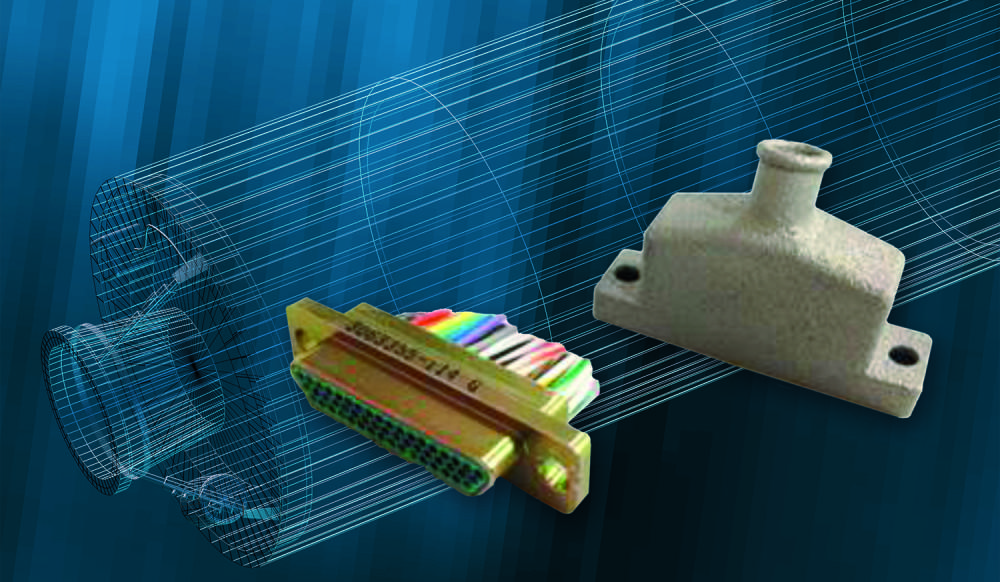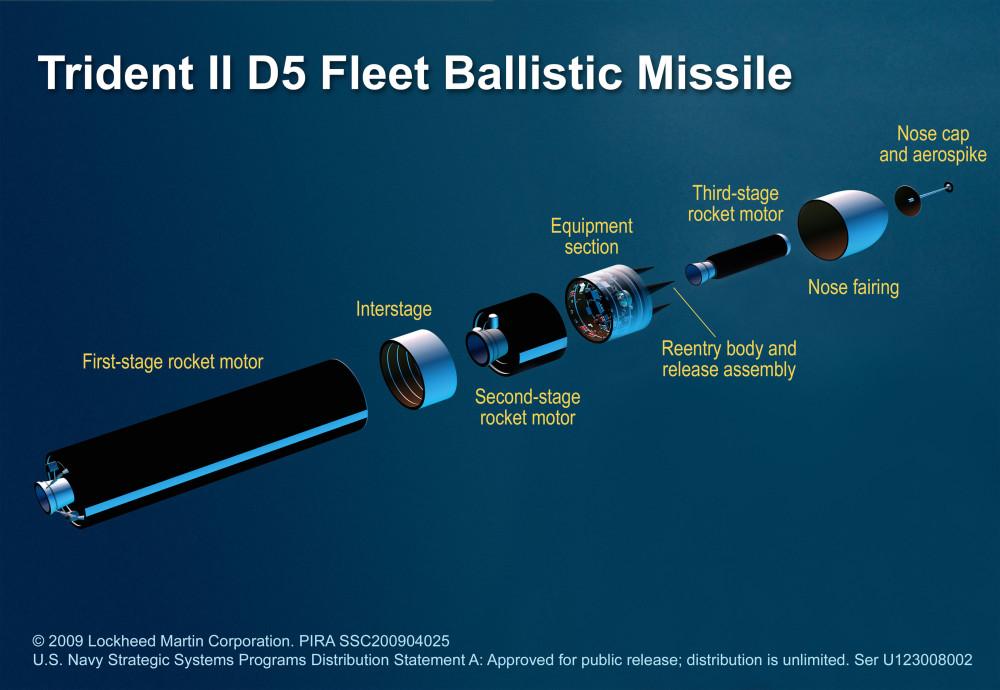US Navy’s Trident II D5 Missile Successfully Launches with 3D Printed Component from Lockheed Martin
 NASA and the US military used 3D printed components to successfully test advanced prototype airplanes, spacecraft and even ground vehicles. For many parts with complex or unique geometries, metal 3D printing technology has not only managed to produce these parts faster, but actually produce them at considerable savings. With many of the companies that are designing and manufacturing weapons for the military using more and more metal 3D printing in their workflow it was only a matter of time until 3D printed components made their way into arms and weapons.
NASA and the US military used 3D printed components to successfully test advanced prototype airplanes, spacecraft and even ground vehicles. For many parts with complex or unique geometries, metal 3D printing technology has not only managed to produce these parts faster, but actually produce them at considerable savings. With many of the companies that are designing and manufacturing weapons for the military using more and more metal 3D printing in their workflow it was only a matter of time until 3D printed components made their way into arms and weapons.
This week, for the first time, a 3D printed component was used in a test flight for the new, high-tech upgrade to the US Navy’s Fleet Ballistic Missile program. Between March 14th and the 16th, the Navy successfully test launched three Trident II D5 Fleet Ballistic Missiles made by Bethesda, Maryland-based Lockheed Martin. The one-inch wide aluminum alloy connector backshell component protects vital cable connectors in the missile. The backshell component was designed and fabricated entirely using 3D design and 3D printing, a process that allowed Lockheed Martin engineers to produce the part in half the time it would take traditional methods.
This recent group of test launches brings the total number of successful tests up to 160 test flights since the basic design was completed back in 1989, making the Trident the world’s most reliable large ballistic missile. The unarmed missiles were launched out in the Atlantic Ocean from a submerged submarine. The test flights were conducted under the testing guidelines set by the Joint Chiefs of Staff as part of a Follow-on Commander’s Evaluation Test of the Trident Strategic Weapon System. Lockheed Martin produced kits, including the 3D printed component, that converted the unarmed missiles into test configurations that included range safety monitoring devices and flight telemetry instruments.
“These tests demonstrate the readiness and reliability of this crucial system that protects what matters most for the nation. The Trident Strategic Weapon System stands guard every minute of every day, thanks to the dedication and forward thinking of the Navy program office, the submarine crews and the industry team,” explained Eric Scherff, Vice President of Fleet Ballistic Missile programs at Lockheed Martin Space Systems.
The Trident II D5 missile is a three-stage ballistic missile that can travel an average range of 4,000 nautical miles while carrying multiple independently targeted missiles. They are typically deployed on US Navy Ohio-class and UK Royal Navy Vanguard-class submarines, primarily as nuclear aggression deterrents. The D5 is the sixth generation of the Trident missile program that has been deployed since the sea-based deterrent program was launched.
Lockheed Martin has been the primary ballistic missile contractor for the US Navy since 1955. That makes theirs one of the longest ongoing government and industry major US weapon system partnerships in history. They also manufacture a wide range of products for the US military, including planes, drones, satellites and spacecraft for human use. Additionally, Lockheed Martin has been selected to perform program management and engineering services for the Royal Navy under the Polaris Sales Agreement.
The 3D printed connector backshell component for the D5 missile was developed using Lockheed Martin’s Digital Tapestry set of advanced manufacturing tools. The Digital Tapestry links all stages of Lockheed Martin’s manufacturing processes, including the initial design concept, part production and final qualification. Using cutting-edge technology like human immersion virtual reality systems during the manufacturing processes, tablet computing to present design data on the production floor and integrated intelligent machines that automate labor-intensive processes as part of the company’s cost reduction efforts. Discuss in the Lockheed Martin 3D Printed Components forum over at 3DPB.com.
Subscribe to Our Email Newsletter
Stay up-to-date on all the latest news from the 3D printing industry and receive information and offers from third party vendors.
You May Also Like
3D Printing News Briefs, April 13, 2024: Robotics, Orthotics, & Hypersonics
In 3D Printing News Briefs today, we’re focusing first on robotics, as Carnegie Mellon University’s new Robotics Innovation Center will house several community outreach programs, and Ugogo3D is now working...
Rail Giant Alstom Saves $15M with 3D Printing Automation Software 3D Spark
3D Spark has entered into a three-year deal with the rail giant Alstom. Alstom, a transport behemoth with annual revenues of $16 billion, specializes in the manufacture of trains, trams,...
Meltio Expands Global Reach with New Partnerships in the Americas and Europe
Spanish 3D printing manufacturer Meltio has expanded its sales network across the globe. With the addition of three new partners in the United States, Brazil, Argentina, and Italy, Meltio aims...
3D Printing Webinar and Event Roundup: April 7, 2024
Webinars and events in the 3D printing industry are picking back up this week! Sea-Air-Space is coming to Maryland, and SAE International is sponsoring a 3D Systems webinar about 3D...


































